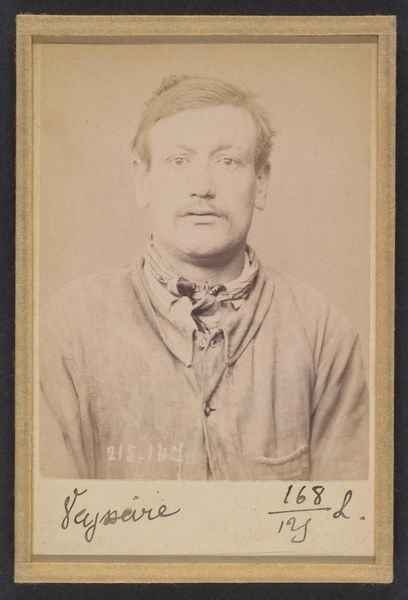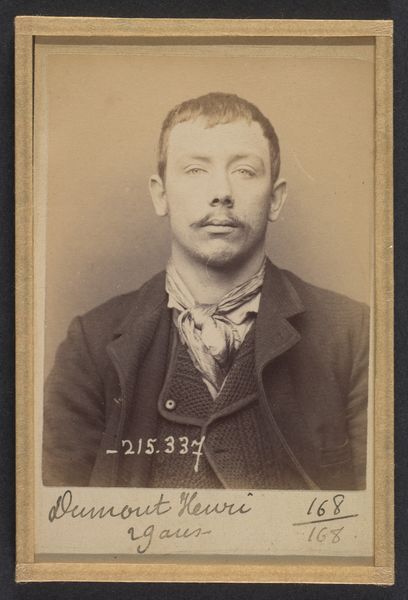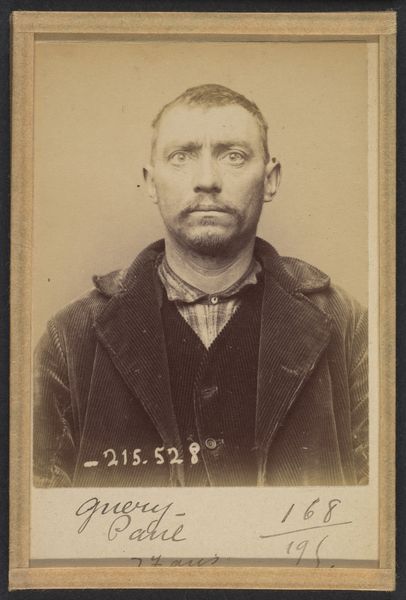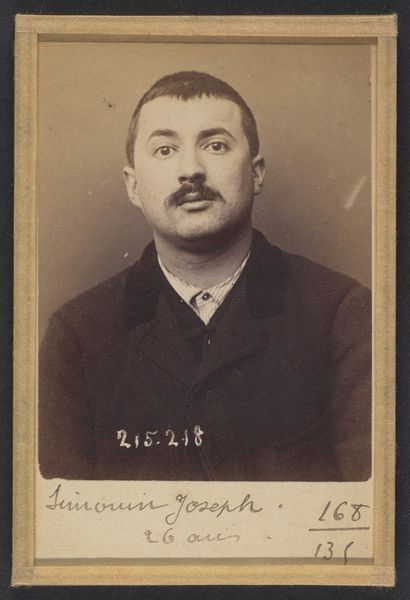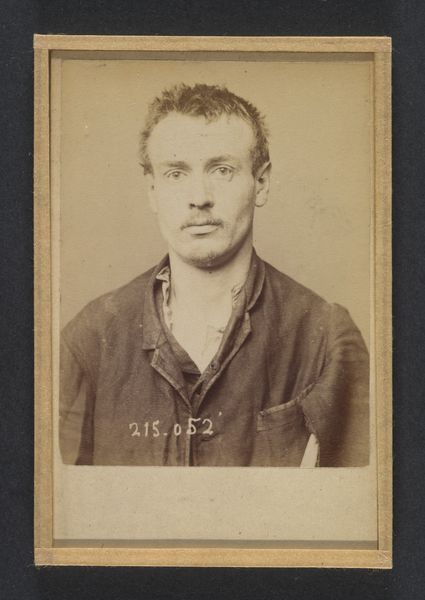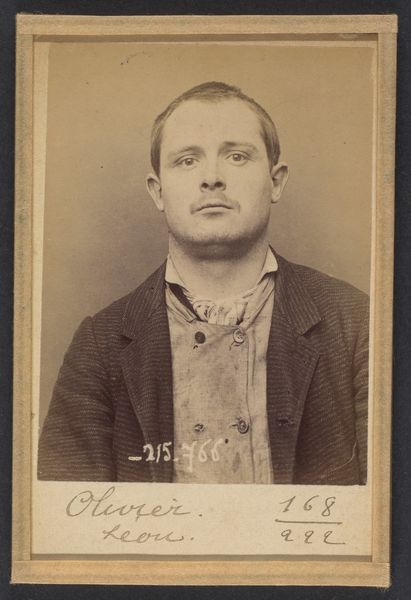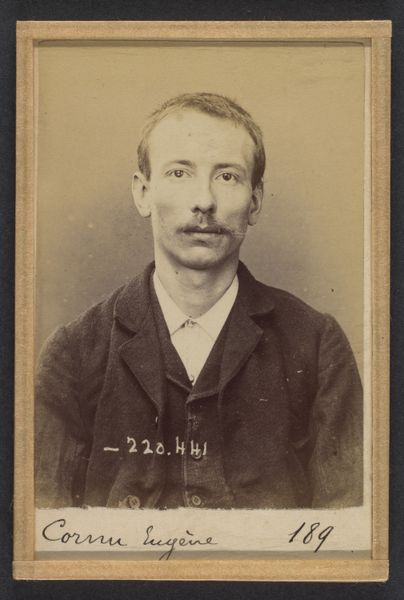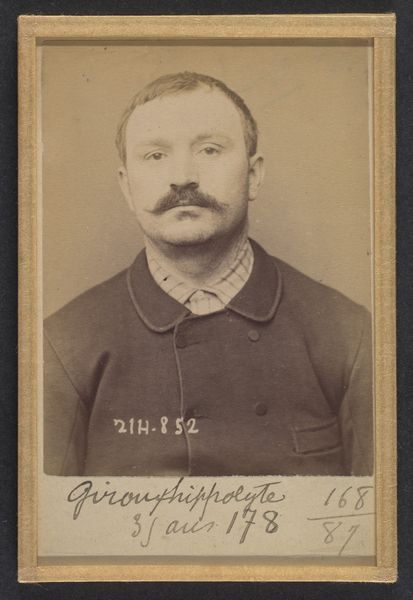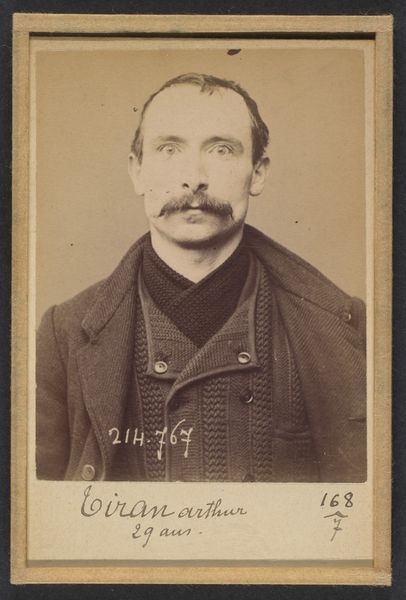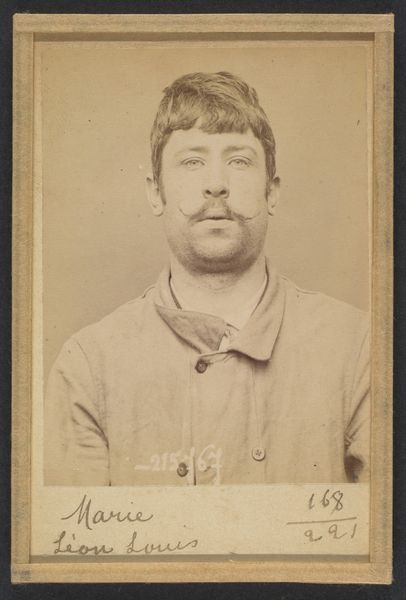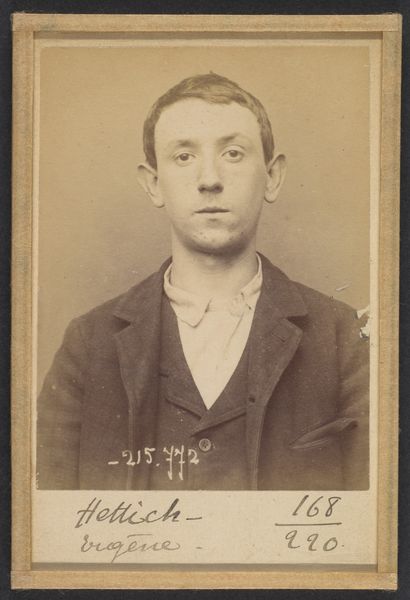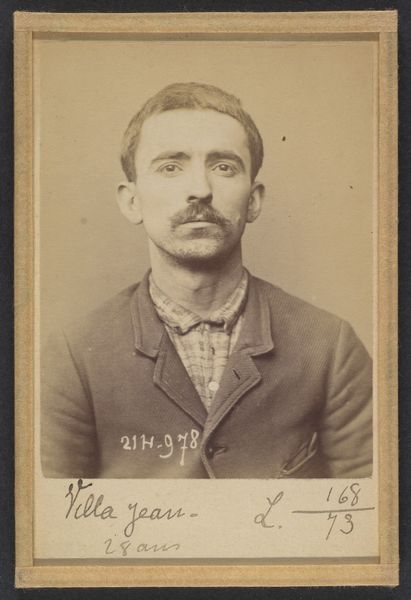
Gaillard. Pierre, Auguste. 47 ans, né à Foulanges (Cantal). Employé de commerce. Anarchiste. 15/3/94. 1894
0:00
0:00
photography, gelatin-silver-print
#
portrait
#
photography
#
historical photography
#
gelatin-silver-print
#
19th century
#
men
#
history-painting
Dimensions: 10.5 x 7 x 0.5 cm (4 1/8 x 2 3/4 x 3/16 in.) each
Copyright: Public Domain
Curator: Let’s turn our attention to a rather unsettling photograph taken in 1894 by Alphonse Bertillon. It’s titled "Gaillard. Pierre, Auguste. 47 ans, né à Foulanges (Cantal). Employé de commerce. Anarchiste. 15/3/94.” It’s currently held here at the Metropolitan Museum of Art. Editor: My goodness, it’s a mugshot. There’s such raw vulnerability on his face. It looks less like a record and more like a cry for help. Even though it’s black and white, I almost feel like I can smell the hopelessness wafting off of it. Curator: You've hit on something essential. Bertillon pioneered forensic photography, using it to classify criminals. But these images transcend mere documentation. This gelatin silver print makes me reflect on the semiotics of criminality, a history etched on Pierre Auguste’s face. His turned-down gaze… Editor: …Suggests defeat, resignation, maybe even defiance? I see the glint of stubbornness in his eye, the subtle set of his jaw. And that hastily knotted scarf! Is it supposed to offer some dignity or warmth in that cold, harsh light? Maybe that small act is the only assertion of self he can manage. Curator: The very act of photographing him this way dehumanizes him. It fits into the era's fascination with physiognomy, attempting to read character from facial features, and this image was created to serve those ends. The subject line also shows a quick analysis. Editor: But, in a weird way, this mugshot humanizes him even further. Stripped bare, Pierre Auguste is reduced to just a name, an age, an accusation…and those piercing eyes. There's no way around that soul. I feel empathy despite myself. What do you see in the visual shorthand of "anarchiste," though? Curator: It’s more about the era's fears—of societal disruption and revolutionary thought. Remember, this was a period of great social upheaval and philosophical ferment, especially for a tradesman such as him. "Anarchiste" instantly labels him as dangerous in the collective mind, marking him a subversive. Editor: Still, it's striking how intimate the portrait feels, like you are face-to-face with a person at his breaking point. Almost more art than evidence, don't you think? Curator: Yes. It raises profound questions about judgment, society, and ultimately, what we choose to see in the faces of others. Editor: Definitely, it serves as a brutal and beautiful reminder: There's a story in every face. And some stories haunt us long after the shutter clicks.
Comments
No comments
Be the first to comment and join the conversation on the ultimate creative platform.

